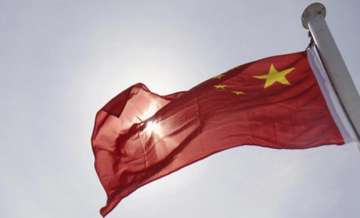China will hold its biggest military parade showcasing some of the most "advanced weapons", including the nuclear arsenal, on October 1 as part of the 70th year of National Day celebration to demonstrate its enhanced deterrence and growing military might to the world.
China would put on a grand celebration, followed by a military parade and mass pageantry at Tian'anmen Square on October 1, the National Day, to mark the 70th anniversary of the founding of the People's Republic of China (PRC), official media reported here on Thursday.
Some advanced weapons will make their debut in the military parade, the scale of which is scheduled to be greater than the ones commemorating the 50th and 60th founding anniversary of the PRC, as well as the V-Day military parade in 2015, state-run Xinhua news agency reported.
The military parade is expected to showcase China's achievements in building its national defence and armed forces in the past 70 years and reflect the outcomes of the reform of the people's armed forces Cai Zhijun, deputy head of the office of the leading group for the military parade, told the media.
The military parade is an important part of the National Day celebration and is not aimed at any other countries or specific situations, Cai said, playing down reports that the display weapons were aimed at showcasing its military might especially to the US and the countries around.
In the parade, China plans to show its strategic nuclear missiles and advanced fighter jets, the Hong Kong-based South China Morning Post reported.
Military analysts said the show of nuclear strength was intended to demonstrate China’s enhanced deterrence and second-strike capability, especially to the United States.
"The parade is to celebrate the 70th anniversary of the founding of the People's Republic of China on October 1. So it should let the whole world see China's achievement of military modernisation under the leadership of President Xi Jinping since he came to power [in 2012]," the Post quoted a Chinese military official as saying.
He said weapon systems such as DF-41 intercontinental ballistic missiles and J-2 submarine-launched ballistic missiles have already been moved to Beijing to join the parade. A squadron of J-20 jets, the country's first stealth fighter, is also preparing for the event.
The DF-41 is capable of carrying multiple nuclear warheads and its range of at least 12,000-km means it can hit any target on the US mainland, the report said. The JL-2, which has a shorter range of 7,000-km, is also able to hit parts of the American continent when launched from the sea.
Hong Kong-based military analyst Song Zhongping said it was likely that Beijing would want to use the parade to send a “warning message” to the US in light of the continuing tensions between the two countries.
"China has invested a lot of resources into military science and technology development in a bid to enhance its nuclear deterrence capability over the past years, which Beijing believes represents a strategic measure in countering the global military hegemony [of the US]," Song was quoted as saying by Post.
He noted that the US has started making new low-yield warheads for its Trident missiles which "lowered the threshold on the use of tactical nuclear weapons".
Adam Ni, a researcher at Macquarie University in Sydney, said that the coming parade would provide a good opportunity for China to show off the breadth of its strategic nuclear deterrent.
"The deployment of DF-41 is a big step for China's nuclear deterrence because it is a more powerful ICBM with greater range and [can carry] more warheads and boasts advanced technology," he said.
Latest World News
